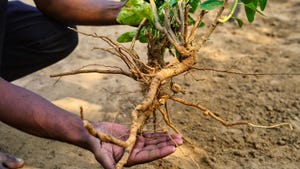Natural disasters hit hemp farmers
Fires on the west coast, snow in the Rockies. As if the USDA wasn't enough!

Fire on the west coast, snow in the Rockies—and just weeks before harvest—have hemp farmers scrambling to keep the valuable crop from being a catastrophic bust for the season.
Farmers faced with losses can apply for crop loss insurance, but that pays only for the price of the seeds, which is a fraction of what they would make with the full-grown plants.
As of Sept. 17, five million acres of forest and other lands have burned in California, Oregon and Washington, and more in Idaho and even in Colorado.
It is not yet known how many hemp farms went up in smoke.
In the Rockies, an early-season snowfall Sept. 7-9 swept from Montana down to New Mexico. Colorado and Montana are the two biggest hemp-growing states.
“We were hit hard,” said Tim Gordon, chief science officer at Functional Remedies, a Colorado brand. “Three inches of heavy snow and freezing temps don’t mix well with cannabis farming.”
Gordon said the week after the snowfall that they expect to lose 40% of the crop—what was expected to be about 5,500 pounds per acre is now down to about 3,300 pounds per acre.
The company wisely had diversified its grow, so that its hemp fields were in Colorado—but also in Iowa.
“With specialty crop farming at scale, diversification is a necessity,” said Gordon. “We are one of the lucky companies that has the ability to farm in multiple locations under our own controls and guarantee our success.”
Hemp farmers, like seemingly everyone in the cannabis industry, are innovators and adaptors. Fellow Colorado farmer Bill Althouse posted on Facebook that his field was “buried under snow” and at a most inopportune time because the trichomes do not fill until the last two weeks before harvest.
The day before the snow hit, it was almost 100 degrees in parts of Colorado. That marked one of the top three widest temperature swings from one day to the next in Denver history. The day after the snow, volunteers on Althouse’s grow placed 5,000 bamboo sticks in the ground to raise and the tie plants.
“It looks like we have salvaged 80% of the field,” said Althouse, who was the first registered hemp farmer in Colorado and first certified organic propagator in the country. “Losses were by snapping off stems and branches under the weight of the snows. The ground was saturated by heavy rain before the snow, softening the soil enough that most fell over without snapping.”
In other parts of Colorado, away from the Front Range that is the populated metropolitan area that runs north-south from Wyoming to New Mexico and holds all of the populated regions of Colorado, farmers reported all was well.
“We were fortunately not affected by that storm here in the Grand Valley,” said Garrett Bain, president of EcoGen, which distributes its hemp for CBD producers around the world. The Grand Valley is on the far western side of Colorado, west of the mountainous region and warmer. “We have a different weather parttern than the Front Range. A lot were able to make it through to harvest. We’re optimistic. It’s been a challenging growing season from a natural disaster perspective.”
About the Author(s)
You May Also Like






.png?width=800&auto=webp&quality=80&disable=upscale)